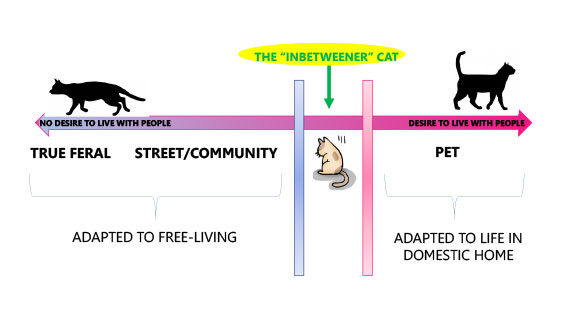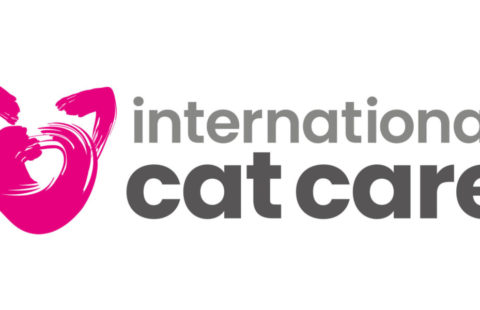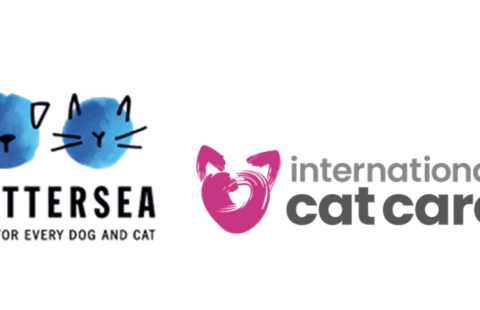Saint Patrick’s Day is here, and celebrations of Irish culture and history are happening across the world.
Although cats didn’t play a significant role in the story of Saint Patrick himself, they do occupy an interesting position in Irish folklore. The King of the Cats features in a couple of stories and is described as ‘an impressive feline possessing the power of speech’. One of these tales, ‘The Proceedings of the Great Bardic Institution’, shows how our perception of the position that cats should occupy has changed over the ages, and how, for some cats, this traditional role can still be beneficial.
The Great Bardic Institution was a collection of learned men and women who were led by the Chief Poet of Ireland. A feast was thrown by the King of Connaught for the newly instated Chief Poet, Seanchan. From the outset of the feast Seanchan refused to eat because of the attention that was being paid to the noblemen there. The King tried and tried, but Seanchan refused everything until a young serving girl offered to bring him a hen’s egg. When she went to fetch it, she discovered that it was gone. Seanchan initially accused her of eating it, but she explained that it had been taken by mice.
This enraged the Chief Poet so much that he recited a poem that made ten mice instantly drop dead. Seanchan then changed his mind and decided that it was the fault of the cats, who he said were responsible for controlling the mice, and he began to satirise Irusan, the King of the Cats.
The story ends unpleasantly for Irusan and contrary to what you’d expect from the unreasonable behaviour he displays throughout, very well for Seanchan, but this idea of cats being responsible for the control of mice is interesting, and it comes from the historical role of the cat as a mouse catcher in agricultural societies.
Cats are thought to have first come into close contact with humans because of rodents. Agricultural farming attracted mice and rats, which in turn attracted cats. This was the start of a mutually beneficial relationship that lasted many years. Their skills in catching rodents were taken and used in new environments, early merchants took cats on ships to protect against rodents spoiling food stores and rope.
Their role in the modern world has changed and today cats are primarily thought of as pets. Our relationship with them has shifted so that the behaviours that were once expected, such as their ability to hunt, are now discouraged. It’s their companionship rather than their ability to catch mice that is valued. As cats don’t have the diversity in appearance that’s seen it dogs, it’s easy to assume that they should all be treated the same way, and that they would all benefit from the accepted modern role of a pet, but for some cats this isn’t the case.
International Cat Care is currently developing the Cat Friendly Solutions initiative to help people care for unowned cats in a range of contexts. Cats have generally been split into two categories, those of non-pets and pet cats, but International Cat Care have proposed the sub-category of the inbetweener for cats that have found the role of pet unsuitable but cannot survive completely independently.
 The inbetweener is a cat that may have lived unsuccessfully as a pet because they’re uncomfortable living in close proximity to people. This could be because they haven’t had sufficient, or the right quality of, interaction as young kittens, or because they have a temperament trait that means they become easily frustrated and see human behaviour as unwelcome or unpredictable. They’re unable to live as street cats because they may need some human support and may only be completely comfortable if they’re in complete control of the amount and type of contact that they have with people. The inbetweener is likely to only be identified once it arrives at a rehoming centre, but these centres and conventional homes where they’d be expected to live in close proximity with people are unsuitable for them.
The inbetweener is a cat that may have lived unsuccessfully as a pet because they’re uncomfortable living in close proximity to people. This could be because they haven’t had sufficient, or the right quality of, interaction as young kittens, or because they have a temperament trait that means they become easily frustrated and see human behaviour as unwelcome or unpredictable. They’re unable to live as street cats because they may need some human support and may only be completely comfortable if they’re in complete control of the amount and type of contact that they have with people. The inbetweener is likely to only be identified once it arrives at a rehoming centre, but these centres and conventional homes where they’d be expected to live in close proximity with people are unsuitable for them.
The sub-category of the inbetweener is still a broad one and includes cats that have a spectrum of different needs. Some do need to be near people, even living in their homes, but without the constant contact and focus seen in a normal relationship. But many need a free-roaming lifestyle where they’re provided with food and shelter and someone that can care for them from a distance. There are many different environments that can be suitable, hotels, stables, farms and even large gardens.
People that can provide these kinds of homes may want a cat to keep a rodent population under control. There is no guarantee that having a cat will eradicate a rodent population, but often its presence will discourage rodents from nesting nearby and they are likely to actively hunt.
Although it would never be right to satirise a cat for its failure to control a rodent population, it’s interesting to note that the role cats played in a tale that’s thought to have been created around the 13th century, still has its place today.






